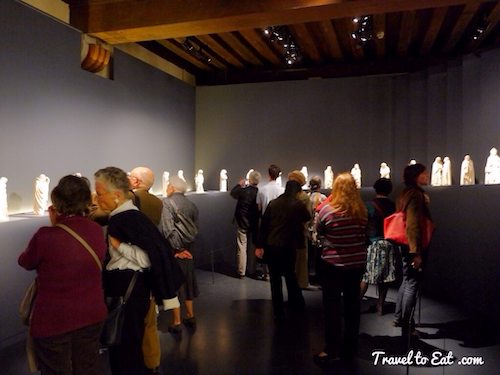
The Hôtel de Cluny is partially constructed on the remains of Gallo-Roman baths dating from the third century (known as the Thermes de Cluny), which are famous in their own right and which may still be visited. In fact, the museum itself actually consists of two buildings: the frigidarium (“cooling room”), where the remains of the Thermes de Cluny are, and the Hôtel de Cluny itself, which houses its impressive collections. The small 15th century medieval alabaster statues seen above are the mourners from the tomb of John the Fearless which have been traveling internationally during the renovation of the Musée des Beaux-Art de Dijon. These unique sculptures, known as “pleurants” or “mourners,” decorate the tomb of John the Fearless, second Duke of Burgundy, and his wife, Margaret of Bavaria.
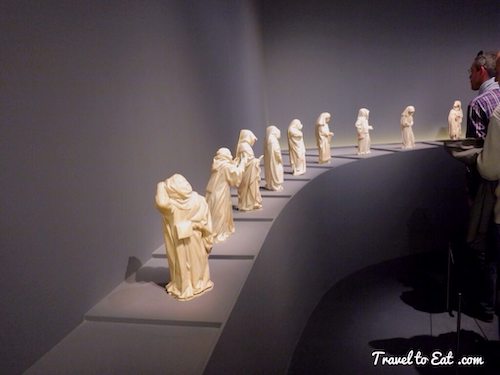
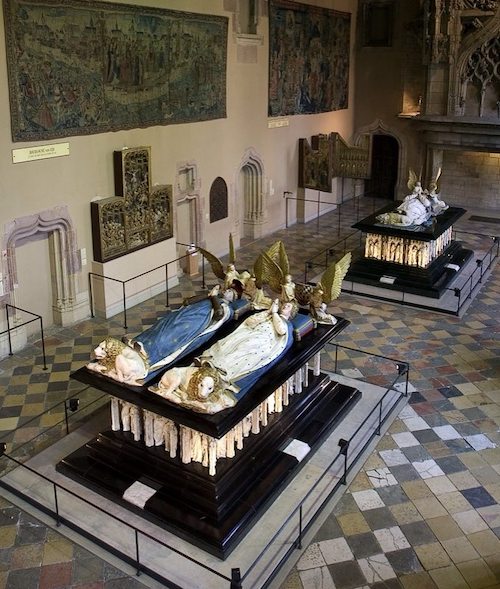
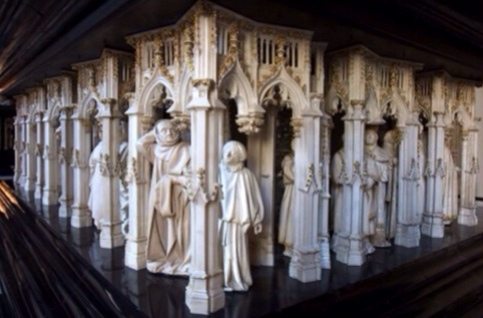
The sculptures were carved by Jean de La Huerta and Antoine Le Moiturier between 1443 and 1470, according to the model of the tomb of Philip the Bold, the first Duke of Burgundy, which was executed by Claus Sluter and his workshop. Both tombs were originally housed in the Chartreuse de Champmol, a Carthusian monastery and the dynastic burial place for the Valois dukes of Burgundy, before being moved to the Musée des Beaux-Arts in nearby Dijon in the 19th century. Each figure stands approximately 16 inches high and represents a mourner moving in procession through the elaborate Gothic arcade in the lower register of John the Fearless’ tomb. Though part of a larger monument depicting a funeral cortege of monks and clerics, each mourner is individualized and masterfully sculpted to portray various states of grief and sorrow. Minute details register profound pathos; the figures sing hymns while holding back their tears, clutch rosary beads in their hands, clasp their hands to their chests, or dry their eyes with their cloaks. Since many of the figures are hooded, their emotional states are conveyed by the boldly modeled folds of their voluminous cloaks.
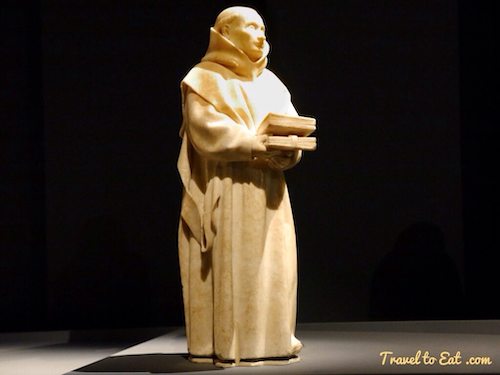
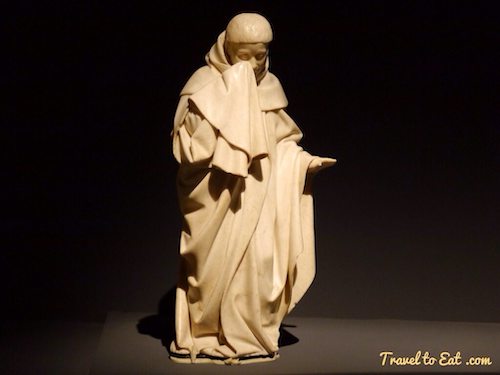
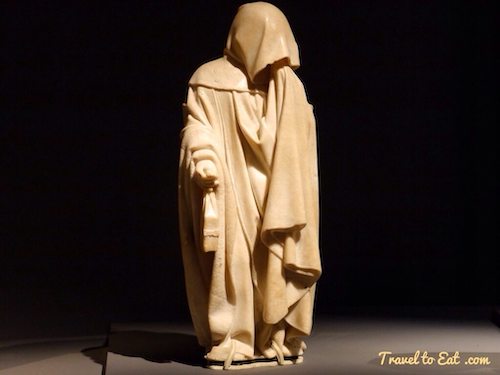
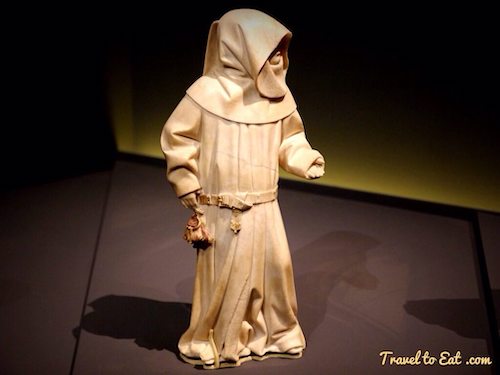
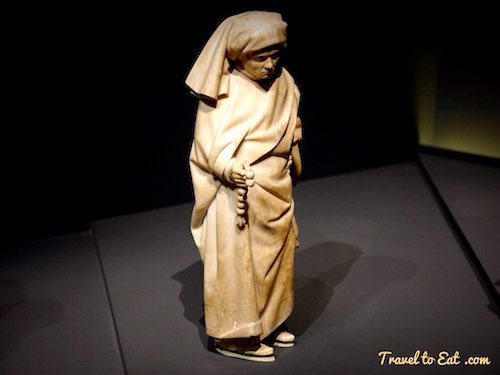
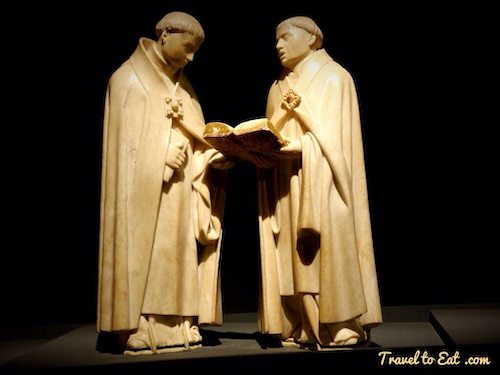
These small figures are exquisite, each a masterpiece in its own way and I encourage you to visit the website of the exhibition where you can examine each figure in three dimensions. I have included photos of just a few of my favorites. Beyond their evident visual and narrative qualities, we cannot help but be struck by the emotion they convey as they follow the funeral procession, weeping, praying, singing, lost in thought, giving vent to their grief, or consoling their neighbor. Mourning, they remind us, is a collective experience, common to all people and all moments in history.
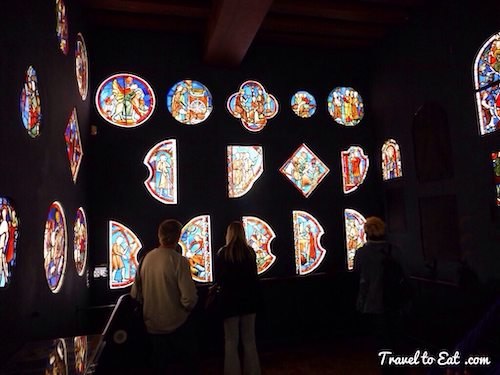
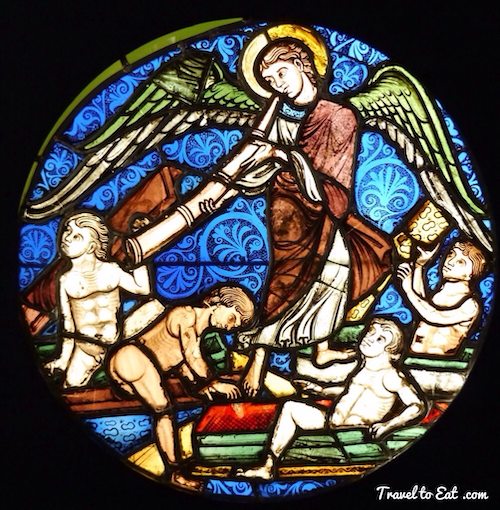
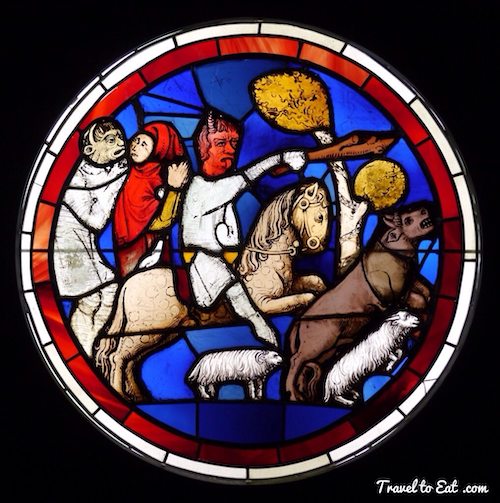
The Cluny has a nice collection of stained glass, much of it from Sainte-Chapelle. The Sainte-Chapelle was requisitioned as an archival depository in 1803 during the French Revolution. Two meters’ worth of glass was removed to facilitate working light and destroyed or put on the market. I assume these are pieces from this time period.
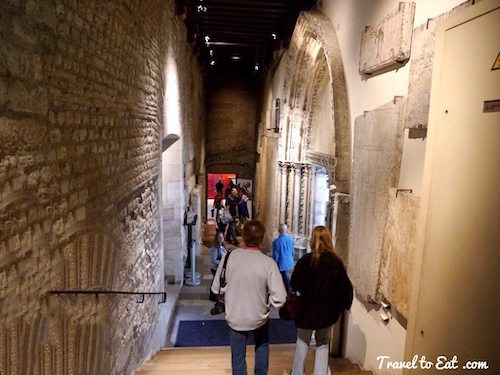
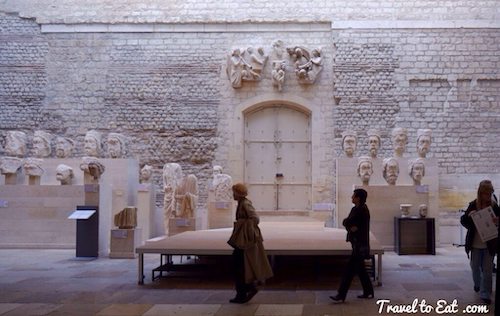
If you have ever wondered what happened to the beheaded statues of the Kings of Israel on the facade of Notre Dame during the French Revolution, you can find them in the Musée Cluny. In the room of the Roman baths, are the heads and bodies of the statues repaired during the extensive restoration of Notre Dame supervised by Eugène Viollet-le-Duc that began in 1845. In addition are other fragments from the restoration. These were among the hundreds of fragments found in 1977 in the foundations of the Banque Francaise du Commerce Exterieur which later became Natixis and donated to the Musée Cluny.
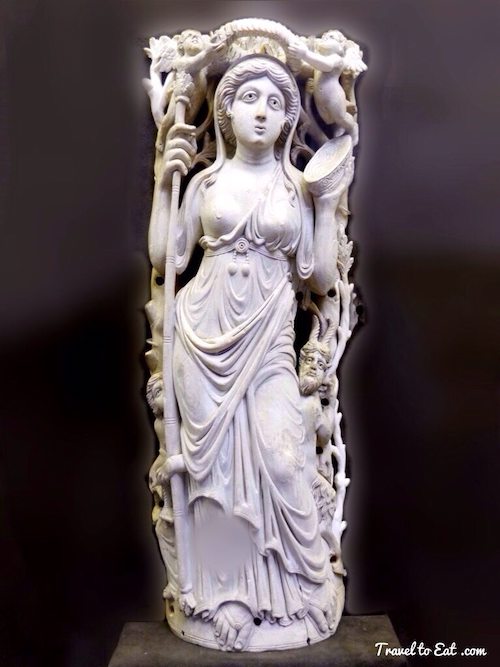
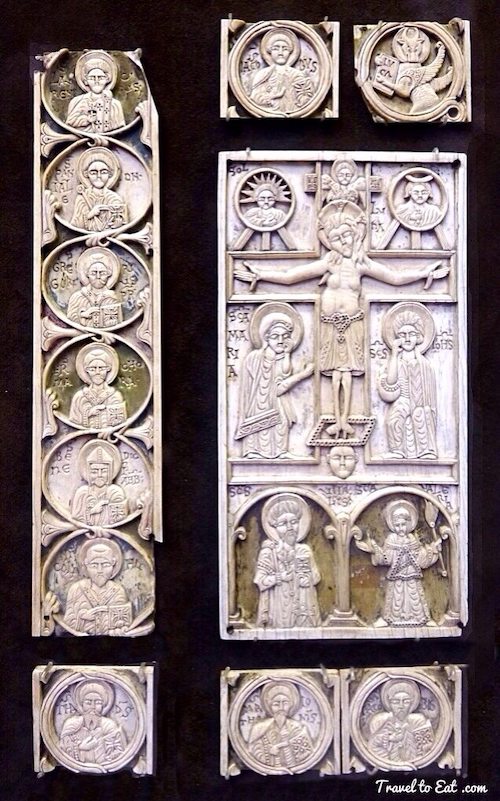
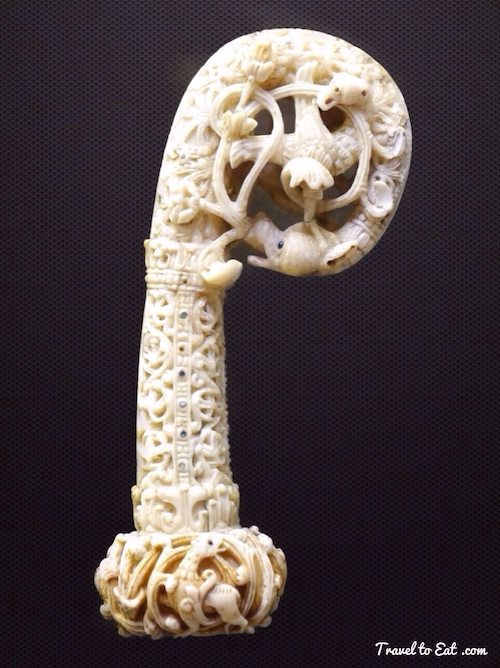
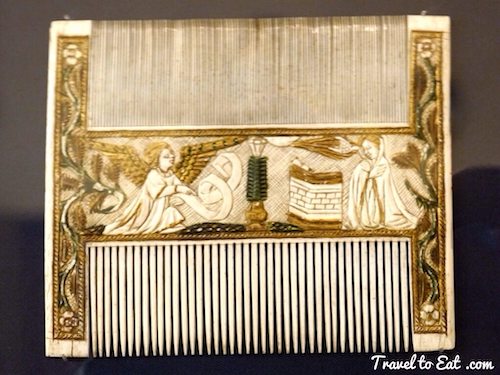
They have a beautiful collection of ivory objects, mostly book bindings. These are exotic, ancient and beautiful. The crozier head is made from walrus ivory, from about 1100 CE, making one wonder how the exploration of the Grand Banks was going at this early date. The Norwegian manuscript Konungsskuggsja, thought to date from around 1240 AD refers to the walrus as “rosmhvalr” in Iceland and “rostungr” in Greenland (walruses were by this time extinct in Iceland and Norway, while the word evolved on in Greenland). While there is no archaeological evidence for a European presence near the Grand Banks between the short-lived Greenland Norse settlement at L’Anse aux Meadows in CE 1000 and John Cabot’s transatlantic crossing in 1497, there is some evidence that voyagers from Portugal and England (especially those from Bristol) and others preceded Cabot. In the 15th century some texts refer to a land called Bacalao, the land of the codfish, which is possibly Newfoundland.
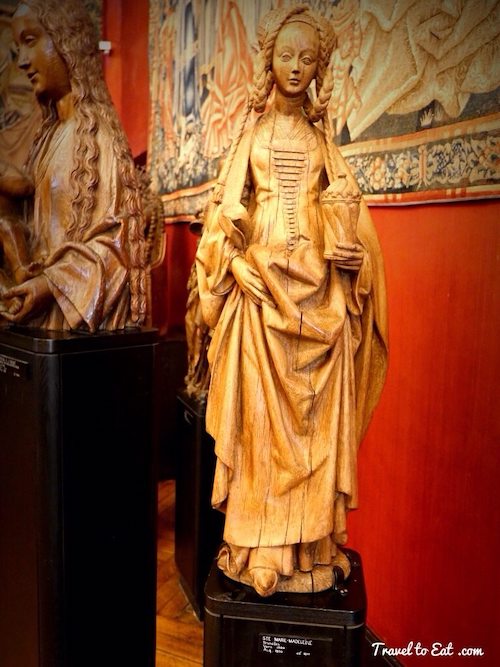
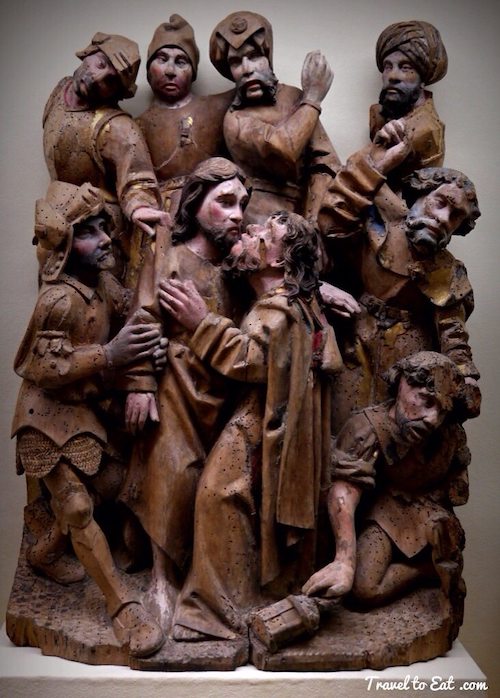
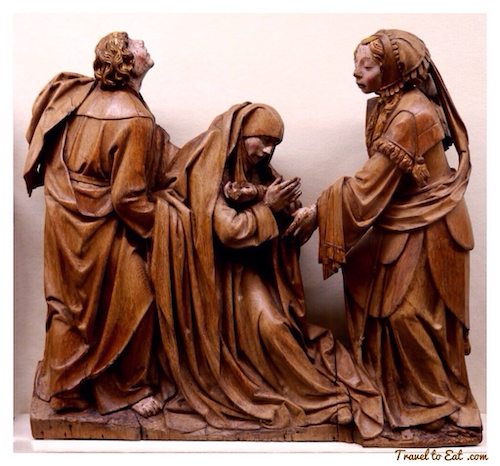
They have a number of beautifully sculpted wooden statues illustrating various persons and moments from the Bible. I am personally amazed that the wood has survived so well through the centuries.
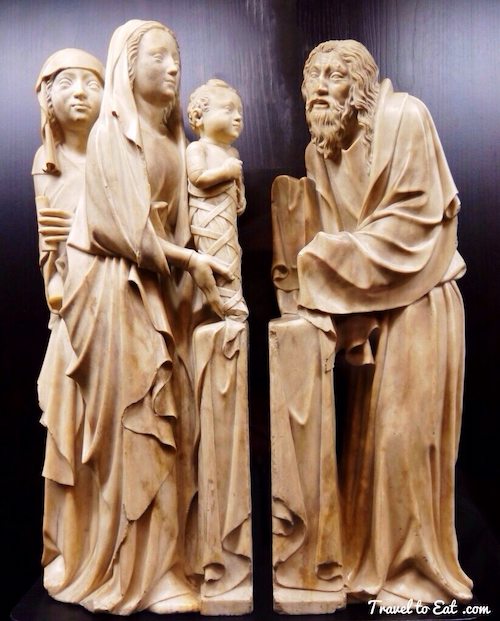
This beautiful scene is presented in two blocks; on the right the elderly Saint Simeon recognizes Christ in the child presented to him and on the left Mary holds up the child in his swaddling clothes. The woman standing behind Mary, perhaps a servant, enriches the scene with a touch of the ordinary. In Paris there was a tendency in sculpture to use real portraits and to convey a sense of monumentality through the treatment of draping. The psychological sensitivity and careful execution of detail suggest that it may be by Jean de Liège or André Beauneveu. Jean de Liège, a French sculptor of Flemish origin, also known as Hennequin de Liège appeared in Paris in 1561. His prestige evidently grew rapidly, since in 1364 he worked for the king on the great staircase of the Louvre, where he was responsible for the statues of the king and queen. Afterwards he built the tomb of the heart of Charles V for the choir of Rouen Cathedral. This marked the beginning of a continuous activity in the service of the king until his death in 1381. André Beauneveu (1335-1400) was a Franco-Netherlandish sculptor, illuminator, painter and stained glass artist, Beauneveu is best known for the sculptures he created while in the service of King Charles V and John Duke of Berry. His work in all media shows a generally naturalistic and ‘sculptural’ style, characteristic of the ‘Pucellian revival’ of the latter 14th century.
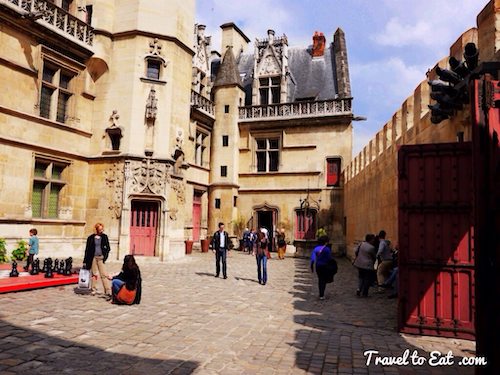
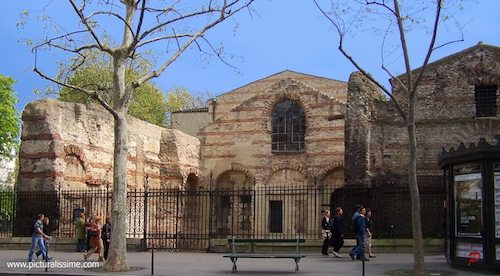
There are many more medieval treasures at the Musée de Cluny, consider a visit if you are in Paris. In terms of the Tomb of John the Fearless in Dijon, consider a piece of advice from our own travels. All the museums in Dijon closed on Tuesday, much to our dismay when we traveled there on a Tuesday from Paris. Make your own plans accordingly.
References:
Official Cluny Website: http://www.musee-moyenage.fr/ang/homes/home_id20392_u1l2.htm
The Mourners: http://www.themourners.org/index.html
ASC Essay: http://www.theasc.com/blog/2011/05/23/the-met’s-mourners/
The Mourners: Tomb Sculpture from the Court of Burgundy [Hardcover]
Medieval Ivory Cluny: http://commons.wikimedia.org/wiki/Category:Medieval_ivory_in_Hôtel_de_Cluny_(Paris)

